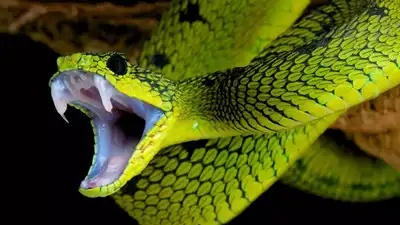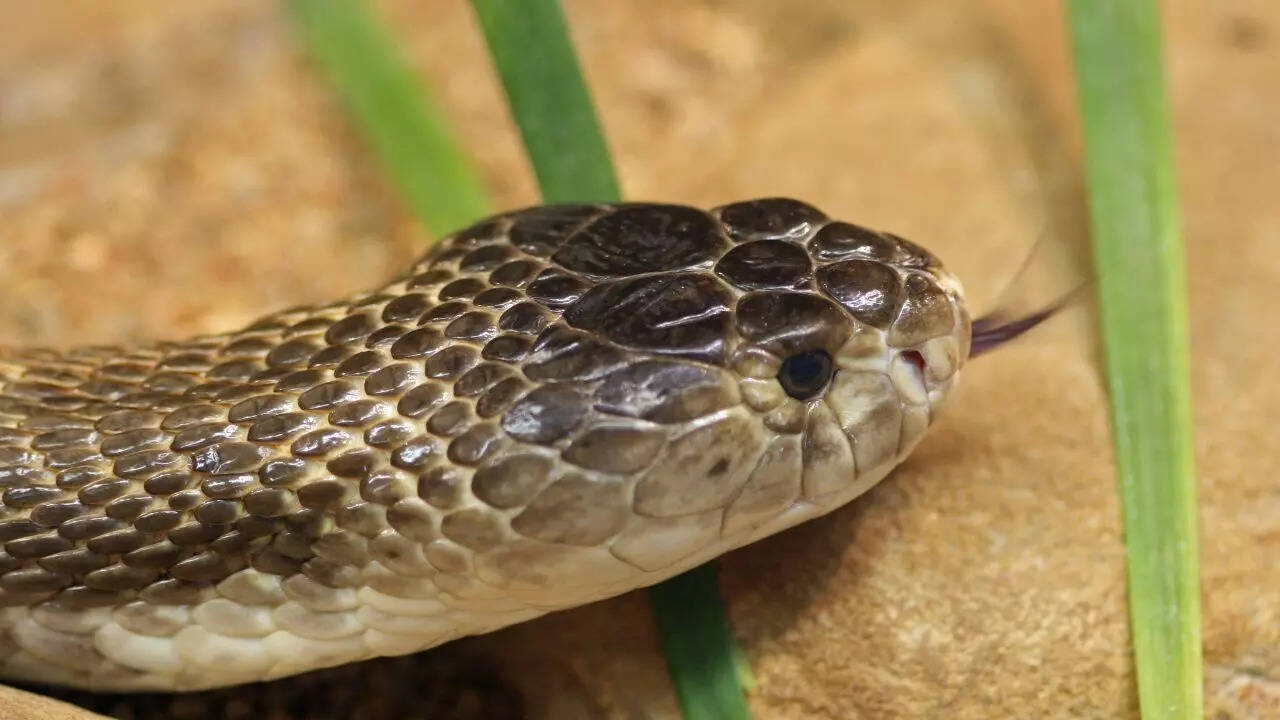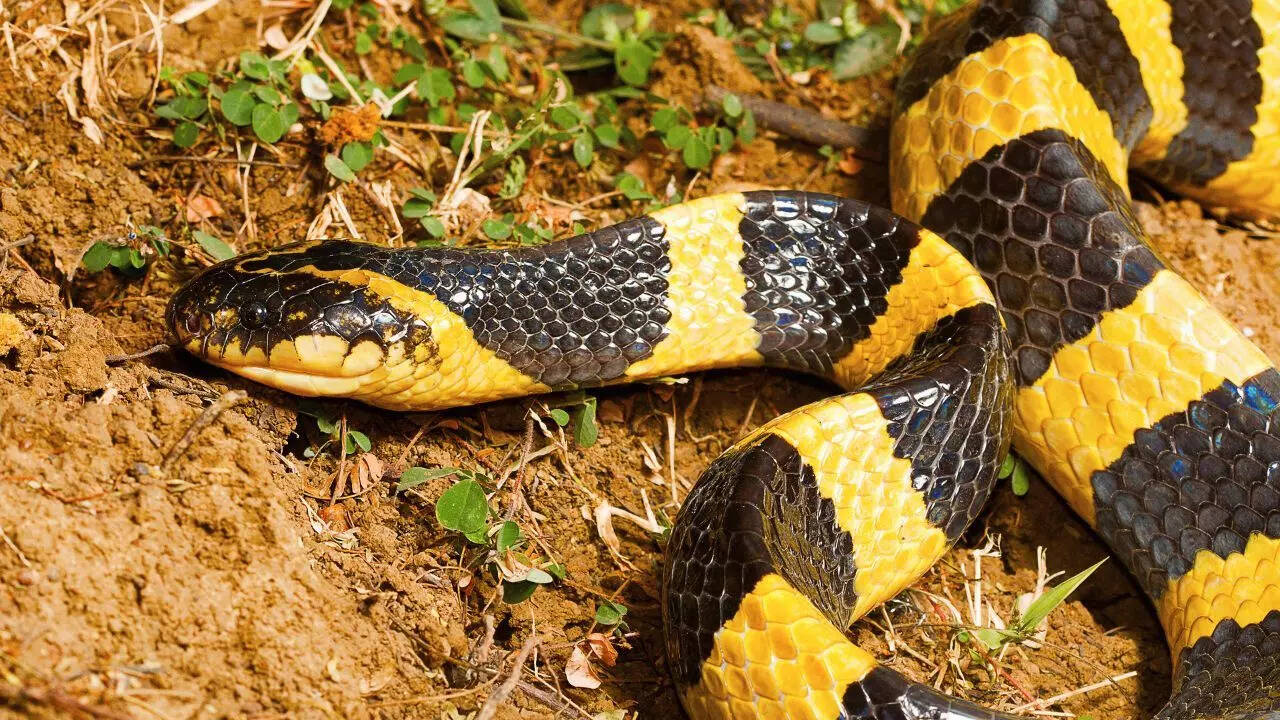ARTICLE AD BOX

Snakes, long feared for their venomous strikes, may be even more dangerous than previously thought. Recent research published in Frontiers in Tropical Disease reveals that certain Indian species, including monocled cobras (Naja kaouthia) and black kraits (Bungarus lividus), can inject venom hours after death.
Led by Susmita Thakur from Namrup College, Assam, the study documents three real-life cases of post-mortem envenomation, showing that residual venom in hollow fangs remains active. These findings underscore the hidden risks of handling dead snakes and highlight the critical need for public awareness, snakebite safety measures, and prompt medical attention even when the snake appears lifeless.
Deadly Indian snakes that can inject venom even after death
Indian snakes such as monocled cobras (Naja kaouthia) and black kraits (Bungarus lividus) have been documented to inject venom even after fatal injuries. While earlier studies primarily focused on rattlesnakes or spitting cobras, the new research led by Susmita Thakur from Namrup College, Assam, expands this risk to native Indian species as reported in Frontiers study.The study recorded three real-life incidents reported at rural health centres in Assam, providing compelling evidence of post-mortem envenomation.

Case studies reported for snakebite venom injection hours after death
First Incident: Monocled cobra bite after beheading
In the first reported case, a 45-year-old man killed a monocled cobra attacking his chickens by severing its head. While disposing of the snake, the severed head bit him on the thumb. He experienced intense pain radiating from the bite to the shoulder, repeated vomiting, and blackening of the bite area.
Medical intervention included intravenous antivenom and pain relief medication, and the patient was discharged after 20 days with follow-up care.“The pain significantly decreased following treatment, and no neurotoxic symptoms developed,” the researchers noted.This incident demonstrates that venom glands remain functional briefly after death, and even a severed head can inflict a potentially dangerous bite.
Second incident: Cobra bite after tractor accident
The second incident involved a man running over a monocled cobra in a paddy field with his tractor. Despite being crushed and presumed dead, the snake bit him on the foot when he stepped off. The patient experienced pain, swelling, discolouration, and vomiting, confirming envenomation.Though there were no neurotoxic effects, the bite caused ulceration, requiring antivenom treatment and extended wound care.“Even after being dead for several hours, the snake was capable of delivering a venomous bite,” the researchers highlighted.This case emphasises the persistent risk of venom delivery from dead snakes in rural and agricultural settings.

Third incident: Black Krait bite hours after death
In the third alarming case, a black krait (Bungarus lividus) was killed in a house, and a neighbour handling its head three hours later was bitten on the finger. The victim quickly developed difficulty swallowing, drooping eyelids, and progressive paralysis.Despite receiving 20 vials of polyvalent antivenom and intensive respiratory support, the patient initially became quadriplegic and unresponsive.
However, after 43 hours of critical care, he fully recovered and was discharged in good health after six days.This case clearly illustrates the extreme danger of post-mortem venom injection, particularly from highly neurotoxic species like kraits.
How can snakes inject venom after death
Researchers explain that certain snakes possess a unique venom delivery apparatus that allows venom release even after death. Key factors include:Venom gland structure: Connected to hollow fangs, the gland can release venom if pressed accidentally.Residual venom in fangs: Even after fatal injury, fangs retain active venom capable of causing envenomation.Mechanical pressure triggers venom release: Handling dead snakes or their severed heads can accidentally trigger venom injection.This mechanism explains why victims experienced symptoms identical to live snake bites, including severe pain, neurotoxicity, and in extreme cases, paralysis.
Implications for snakebite safety and public awareness
These incidents highlight an urgent need for public awareness regarding post-mortem snakebite risks. Key safety tips include:Never handle dead venomous snakes without proper tools or protective gloves.Seek immediate medical attention if bitten, even by a seemingly dead snake.Educate rural and agricultural communities about the lingering danger of venomous snakes.Experts stress that all venomous snakes, including cobras and kraits, should be treated as potentially dangerous until completely neutralised.Also Read | 10-ft-long Indian rock python rescued after causing panic in Mumbai society amid heavy monsoon rains



.png)
.png)
.png)
















 1 hour ago
3
1 hour ago
3









 English (US) ·
English (US) ·